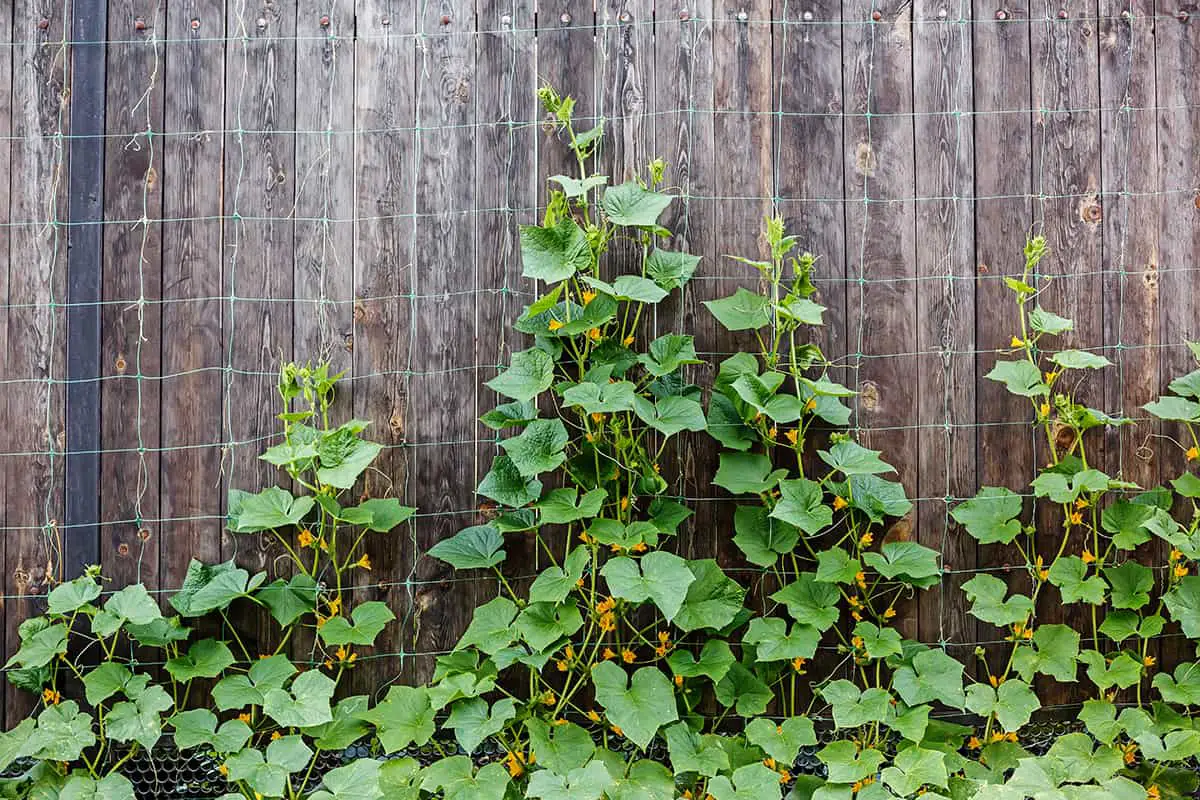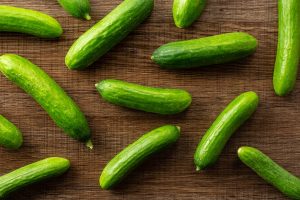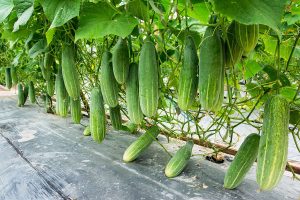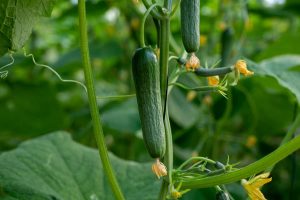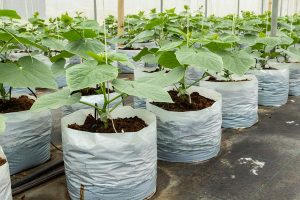Growing cucumbers vertically is an excellent space-saving technique for your garden. By using vertical supports like a trellis or pergola, you can maximize your garden’s productivity while minimizing the required area. This approach not only helps manage plant diseases but also makes harvesting easier.
Table of Contents
Choosing the Right Variety
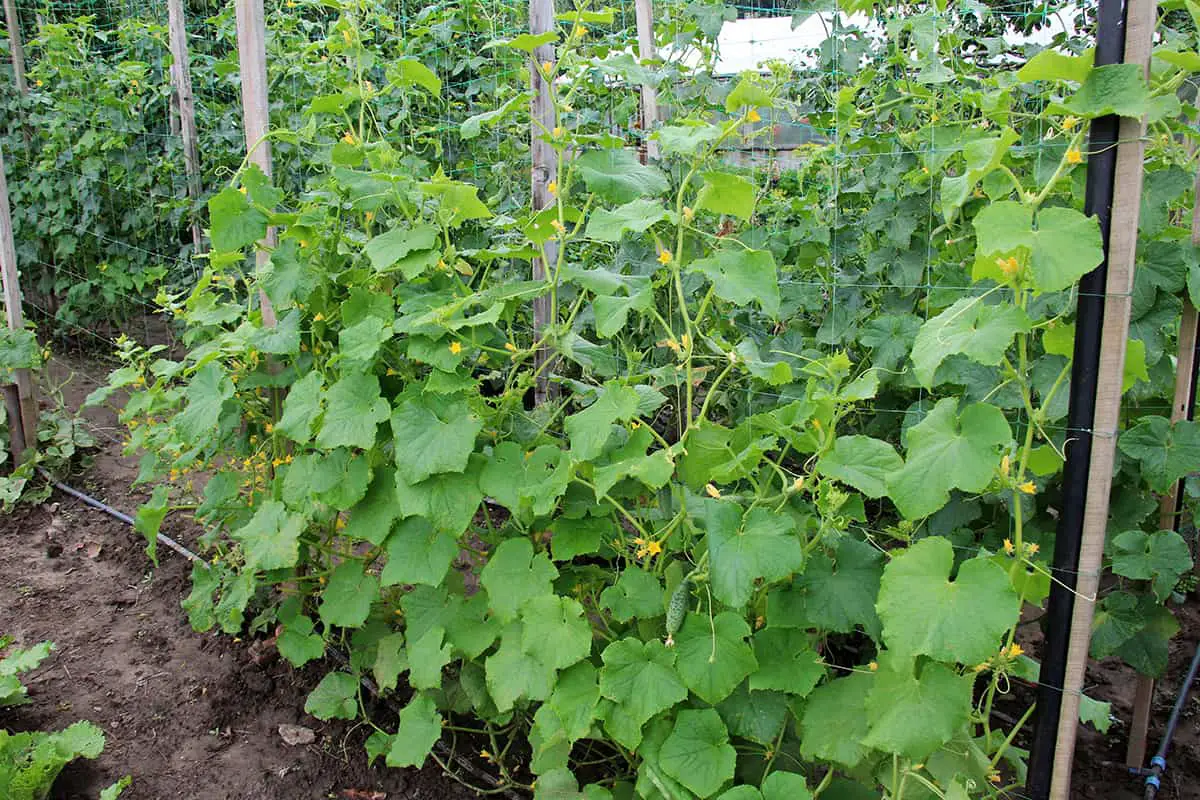
While many cucumber varieties can be grown vertically, selecting the right variety can improve your success significantly. Vining cucumbers are better suited for vertical gardening rather than bush varieties.
Some popular vining cucumber varieties include English cucumbers, slicing cucumbers, and pickling cucumbers. Always opt for disease-resistant varieties for a healthier and more abundant harvest.
Setting Up Your Vertical Garden

Materials and Tools Required
To start your vertical garden, gather these essentials: a trellis or other structure, suitable soil mix, cucumber seeds or seedlings, a watering system, and some basic gardening tools. Create a checklist and have everything ready before you begin.
Selecting the Suitable Structure
Choose vertical support suited for cucumber plants, such as a trellis, pergola, or cage. Ensure that your structure is strong enough to handle the weight of growing cucumbers and can be securely anchored. Opt for a structure that provides ample space for the plants to grow and leaves to spread out.
Preparing the Soil Mix
Cucumbers thrive in well-drained, loose, and deep soil. Prepare a fertile and nutrient-rich soil mix by combining equal parts of compost, garden soil, and perlite or vermiculite. Before planting, ensure that the soil is moist but not waterlogged. It’s crucial to maintain a pH level between 6.0 and 6.8 for optimal cucumber growth.
How to Plant Cucumbers Vertically
Germination
To germinate seeds, start them indoors 2-3 weeks before your region’s last frost date. Place well-moistened seedling mix in seed trays or pots, planting cucumber seeds around 1 inch deep.
Keep the soil moist and maintain temperatures between 70-85°F. Expect seed germination within 7-10 days. During this time, ensure the seedlings receive ample sunlight or use a grow light to provide adequate lighting.
Transplanting Seedlings
Prior to transplanting, prepare your vertical structures, such as trellises, pergolas, or tomato cages. Place them in a sunny location with minimal wind exposure to promote plant growth and stability. Ensure the soil is well-drained, loose, and deep. Amend your garden soil with compost or aged manure to give your plants a nutrient boost.
When the cucumber seedlings have at least two sets of leaves, they’re ready for transplanting. Harden them off over a few days, gradually exposing them to outdoor conditions. Once they are acclimated to their environment, transplant your seedlings to their vertical growing space at a distance of about 8-12 inches apart.
Gently guide the vines to grow towards the support structure as they develop. This approach not only saves space and improves air circulation around the plants, but also helps make harvesting easier.
Cucumber Plant Care
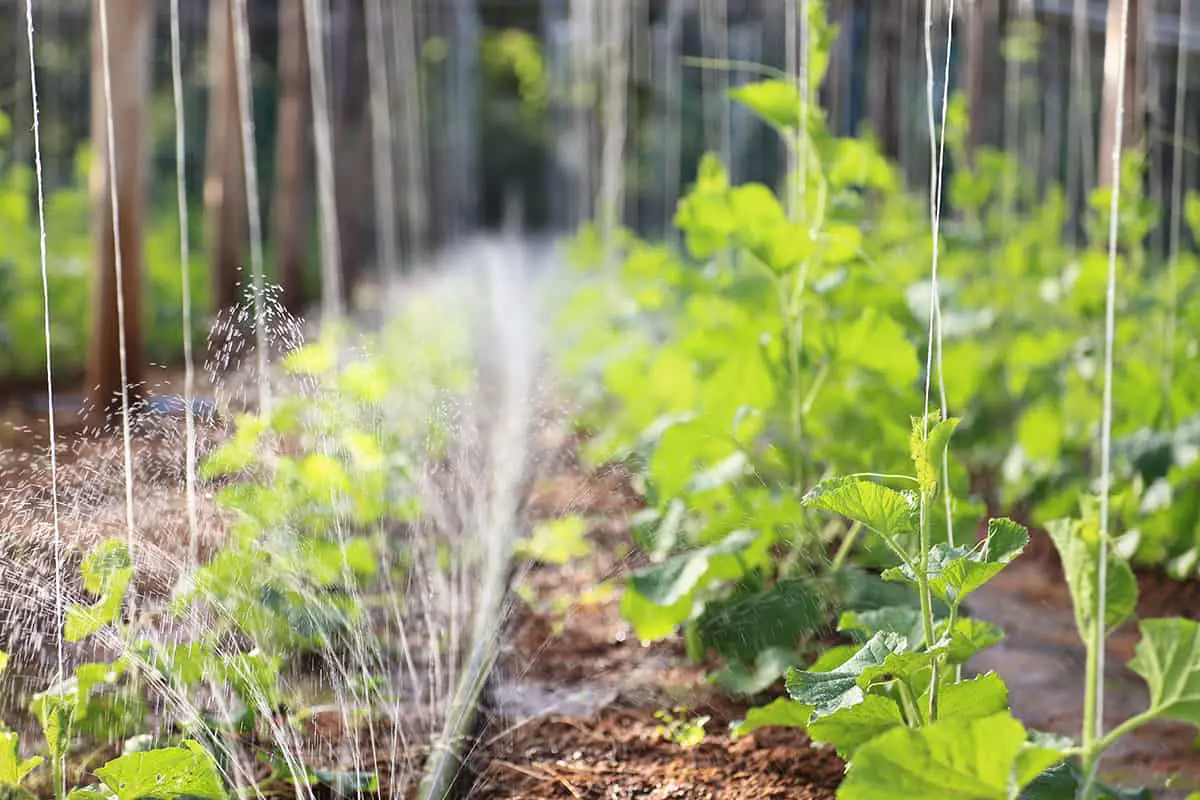
Watering
Cucumbers need consistent moisture to grow well. Water your plants deeply and regularly, aiming for at least 1 inch of water per week. Use a drip irrigation system or a soaker hose for efficient watering that keeps the foliage dry and reduces the risk of diseases.
Fertilizing
Use a balanced, all-purpose fertilizer to promote healthy growth. Start by mixing compost or well-rotted manure into the soil before planting.
Once the plants have produced their first true leaves, apply a liquid fertilizer every two weeks throughout the growing season. Cucumbers are heavy feeders, so don’t be shy with the nutrients.
Pest and Disease Management
Pests and diseases can be a challenge for cucumber plants. Here are some tips to keep your plants healthy:
Disease prevention: Good airflow around the plants helps prevent diseases like powdery mildew and downy mildew. Growing cucumbers vertically allows for better air circulation, reducing the risk of these issues.
Pest control: Keep an eye out for common pests like aphids, cucumber beetles, and spider mites. Handpick pests or use insecticidal soap or neem oil to control their populations. Protect young plants with floating row covers to deter cucumber beetles.
Regular monitoring: Regularly inspect your plants for signs of pests or diseases, such as yellowing leaves, wilting, or stunted growth. Address any issues promptly to maintain healthy and productive vines.
Training Cucumbers to Climb
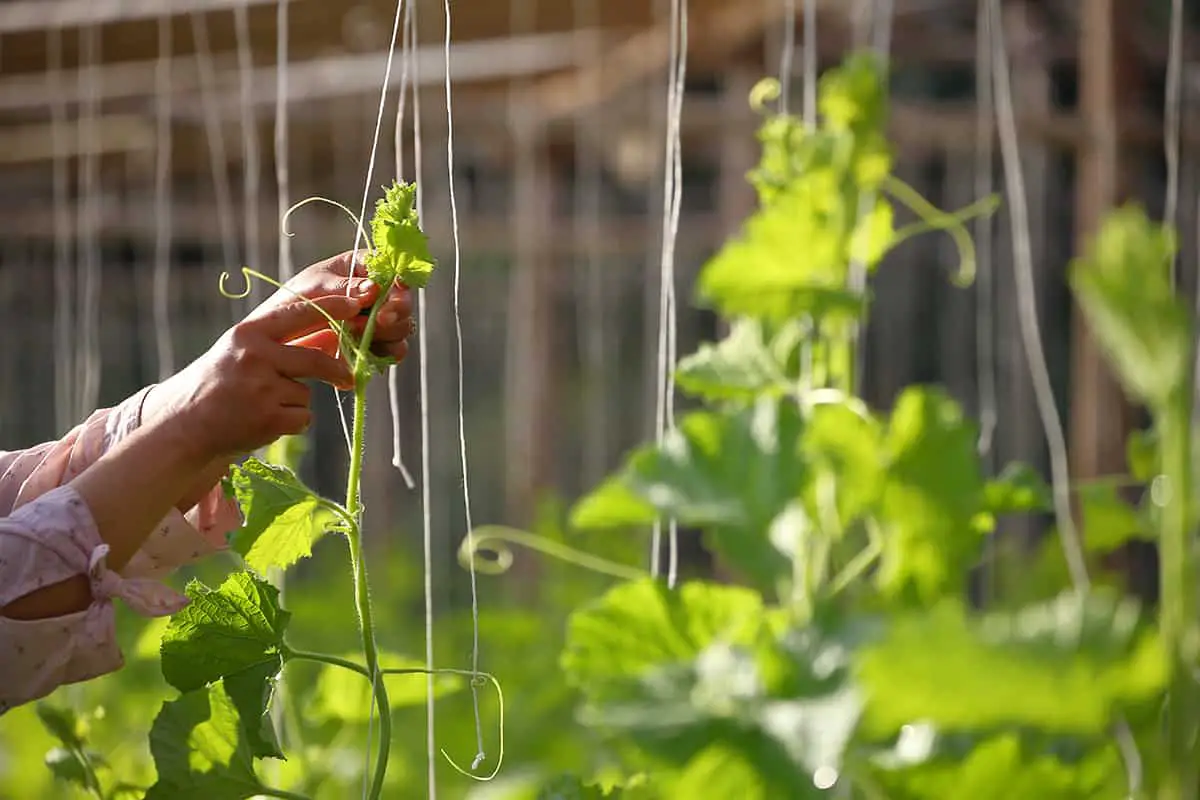
Before your cucumber plants get too large, set up a support structure.
Choose Support Types
There are several types of support structures to help your cucumbers grow upwards:
Trellis: A cucumber trellis is a common support system made of wood, metal, or plastic. It provides a sturdy framework for your plants to grow on.
Netting: Netting is a lightweight, flexible alternative to trellises. It offers a grid-like pattern for your cucumbers to latch onto.
String: Another option is to use strings or ropes attached to a stable structure, like a fence or posts. This method creates vertical lines for your cucumbers to climb.
How to Plant and Guide the Vines
Alongside choosing a support type, you need to employ the right trellising methods for successful vertical growth:
Planting: Proper planting techniques ensure that your cucumbers can be trained easily. Start by planting seeds or seedlings at the base of your chosen support system. Space them accordingly, usually about 1-2 feet apart.
Tying: As your cucumber plants climb, you should loosely tie their stems to the support system. This helps to guide their growth and prevents them from falling off.
Advantages of Vertical Cucumber Farming
Space Efficiency
Vertical cucumber farming is a great way to maximize the space in your garden. When you grow cucumbers vertically, you make use of the vertical area rather than the horizontal ground space. This makes it perfect for small gardens or for growing multiple crops in a limited area.
By using a trellis or an A-frame structure, you can easily double or even triple your growing space. This allows you to plant more cucumbers or other vegetables alongside them. Additionally, vertical gardening can also make harvesting easier, ensuring you get the most out of your efforts.
Improved Air Circulation
Another advantage of vertical cucumber farming is the improved air circulation around your plants. When cucumbers are grown on the ground, they often suffer from poor air circulation which can lead to disease and pests. However, by growing them vertically, you provide increased airflow, reducing the likelihood of these issues.
Improved air circulation also helps to dry out the plant leaves faster after rainfall or watering. This is important because damp leaves are a breeding ground for diseases such as powdery mildew.
